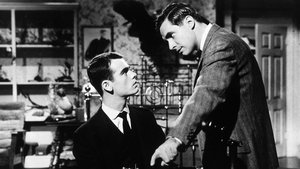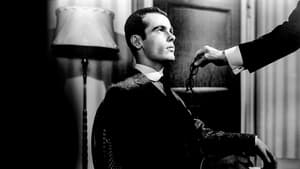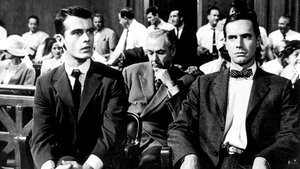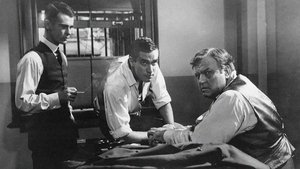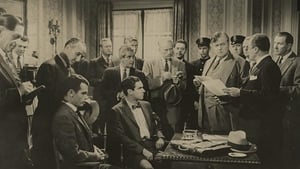Video Sources 0 Views
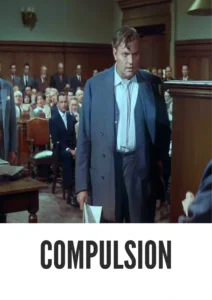
Download Compulsion (1959) Colorized HD | Orson Welles | Courtroom Drama Masterpiece
Synopsis

Delve into the dark heart of the American justice system with Compulsion, a chilling courtroom drama from 1959, now beautifully colorized for a viewing experience that intensifies its already potent themes. Based on the Leopold and Loeb case, this film, featuring a powerhouse performance by Orson Welles, offers a disturbing exploration of crime, punishment, and the complexities of the human psyche. Perfect for fans of intense legal thrillers and those fascinated by true crime stories, this HD download brings a controversial and unforgettable cinematic experience to your screen. This movie was also released under the titles In Compulsion and Never Say Goodbye.
Compulsion tells the story of two wealthy, intelligent young men, Judd Steiner (Dean Stockwell) and Arthur Straus (Bradford Dillman), who commit a seemingly motiveless murder. Their arrogance and belief in their intellectual superiority lead them to believe they can outsmart the authorities. However, their carefully constructed facade begins to crumble as the police investigation intensifies.
As the evidence mounts against them, a renowned defense attorney, Jonathan Wilk (Orson Welles), steps in to defend them. Wilk, a passionate advocate against the death penalty, takes on the case not to exonerate them, but to argue against capital punishment. The film follows the intense courtroom battle as Wilk delves into the psychological motivations of the killers, revealing the dark and twisted relationship between Judd and Arthur. Through his powerful closing argument, Wilk exposes the societal factors that may have contributed to their crime, challenging the audience to consider the complexities of justice and the value of human life. Compulsion is a thought-provoking and disturbing film that raises profound questions about morality, responsibility, and the nature of evil.
The film features a stellar cast of actors who deliver unforgettable performances:
-
Orson Welles as Jonathan Wilk
-
Dean Stockwell as Judd Steiner
-
Bradford Dillman as Arthur Straus
-
Diane Varsi as Ruth Golden
-
E.G. Marshall as District Attorney Horn
Compulsion falls squarely into the genre of courtroom drama, with strong elements of crime thriller and psychological drama. Its intense courtroom scenes, coupled with its exploration of dark psychological themes, make it a captivating and disturbing film.
Released in 1959, Compulsion was a daring and controversial film for its time, tackling sensitive issues such as homosexuality, intellectual arrogance, and the death penalty. The film was based on the infamous Leopold and Loeb case of 1924, in which two wealthy college students murdered a young boy in a thrill killing. Compulsion reflects the anxieties and moral complexities of the 1950s, a decade marked by social conformity and Cold War paranoia. The film’s unflinching exploration of dark themes challenged the prevailing norms of the era, making it a groundbreaking and influential work of cinema.
This colorized version of Compulsion has been meticulously restored using state-of-the-art digital techniques, enhancing the visual impact of the film while remaining true to its original atmosphere of tension and suspense. The colorization process involved carefully studying the original black and white footage and applying appropriate colors to each scene. Sophisticated algorithms were used to select the color palette and enhance the image quality. This painstaking process breathes new life into the characters and settings, making the story even more compelling for contemporary viewers. While the decision to colorize classic films is often debated, it can introduce these films to a wider audience, ensuring their continued relevance for future generations.
-
: Richard Fleischer
-
: Richard Murphy
-
: the novel by Meyer Levin
-
: William C. Mellor
-
: William Reynolds
-
: Darryl F. Zanuck Productions
-
: 20th Century Fox
-
: 103 minutes
-
: MP4
-
: HD (1080p)
-
: Compatible with most devices, including smartphones, tablets, computers, and smart TVs.
Compulsion (1959) is widely regarded as a powerful and thought-provoking courtroom drama, earning praise for its stellar performances, taut direction, and unflinching exploration of complex themes. Orson Welles’ performance as Jonathan Wilk is considered one of the highlights of his career, and the film was nominated for several awards, including Best Actor for Welles at the Cannes Film Festival. As a daring and controversial film that challenged the conventions of its time, Compulsion remains a relevant and influential work of cinema.
-
: What is Compulsion about?
-
A: Compulsion is a courtroom drama about two young men who commit a murder and the attorney who defends them.
-
-
: Is Compulsion (1959) based on a true story?
-
A: Yes, Compulsion is based on the Leopold and Loeb case of 1924.
-
-
: Is this version of Compulsion colorized?
-
A: Yes, this version has been professionally colorized to enhance the viewing experience.
-
-
: What makes Compulsion interesting for fans of true crime?
-
A: Compulsion offers a fictionalized but compelling look into one of the most infamous crimes of the 20th century.
-
-
: What is the download format?
-
A: The download format is MP4, which is compatible with most devices.
-
-
: What resolution is the download?
-
A: The resolution is HD (1080p), providing a high-quality viewing experience.
-
Watch Compulsion Today!
